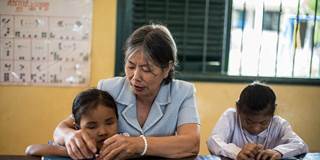The Promise of Inclusive Education
The international community has until 2030 to deliver primary education to every child on the planet. But if this target is to be met, more money will be needed to support children with disabilities in developing countries, a vulnerable population that is too often excluded from the classroom.

WASHINGTON, DC – Ali Moussa and Mahmoud are sixth graders in Zanzibar. Both boys are nearly blind and use recording devices and braille machines to read. But, thanks to their school and teacher, they are able to keep pace with their peers in the mainstream primary school that they attend.